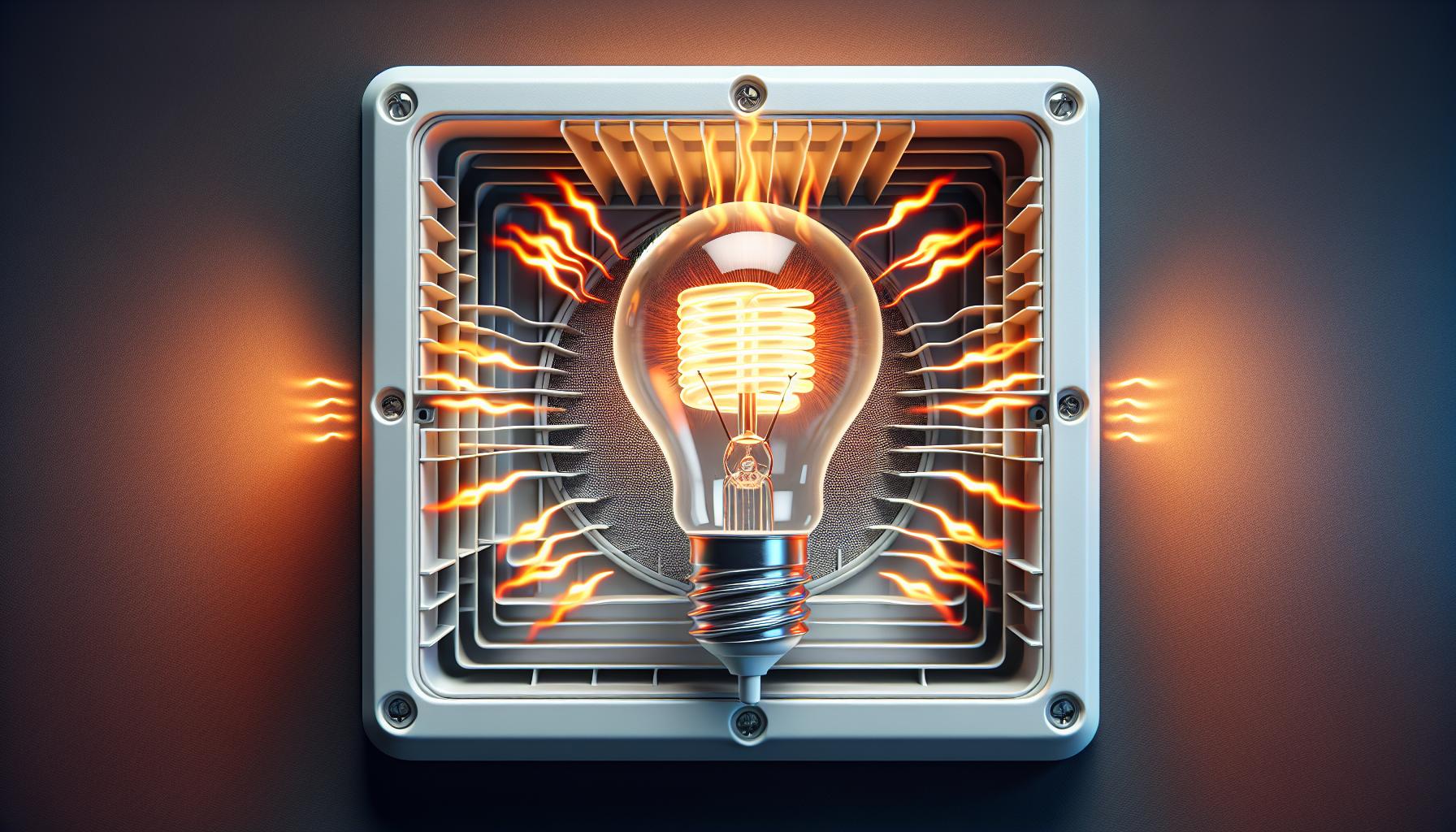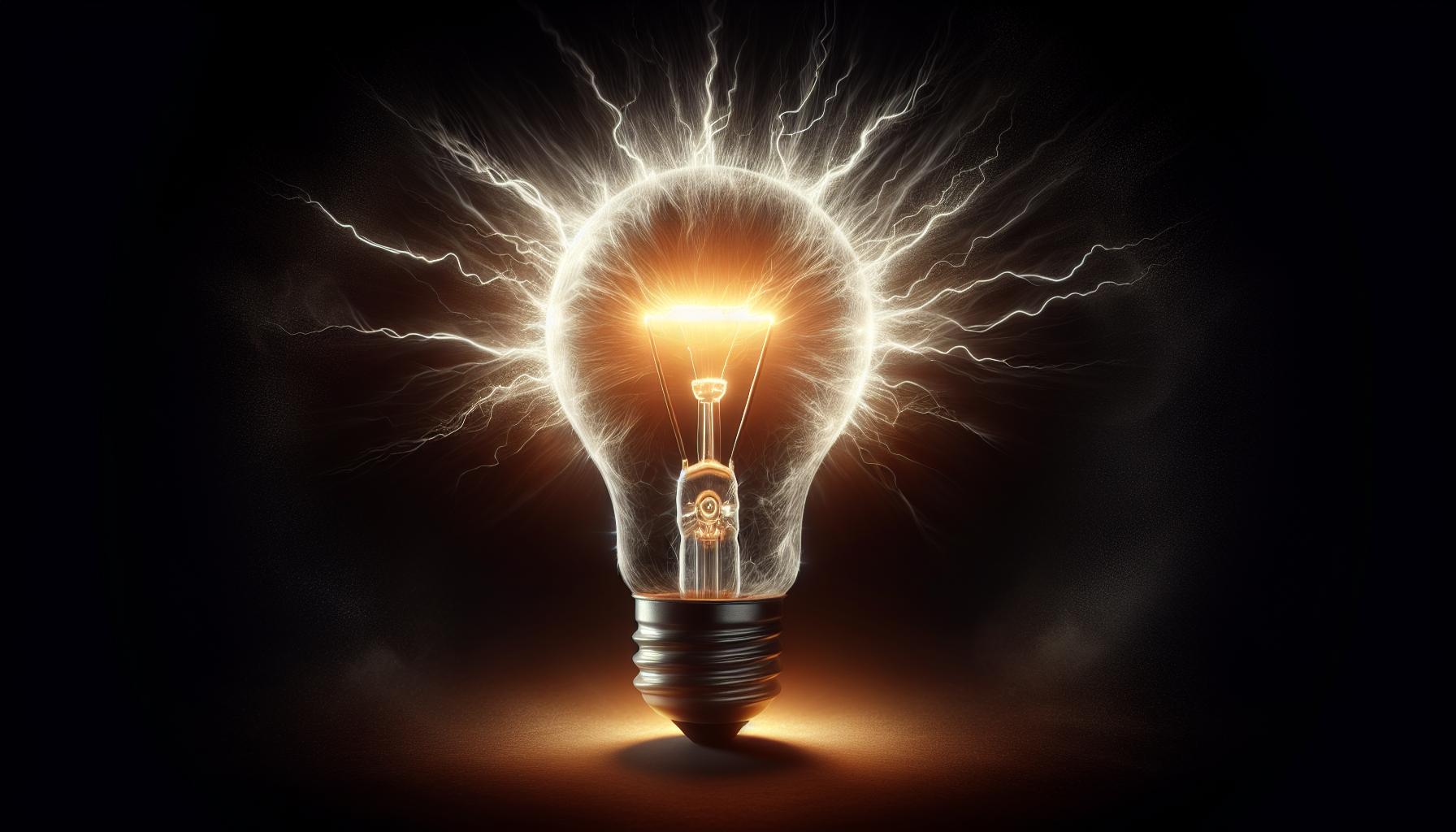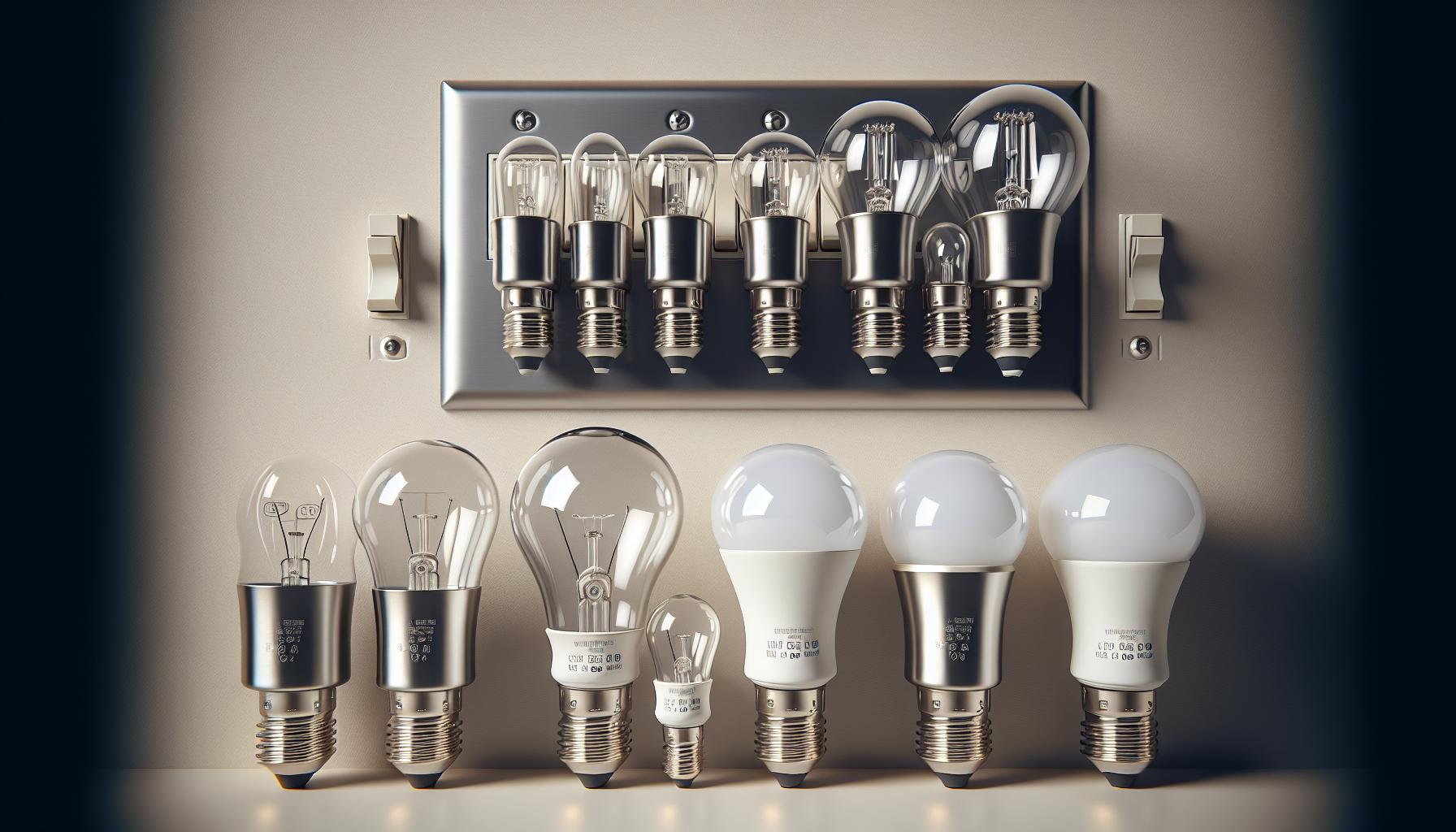Ever wondered why your light bulbs seem to call it quits at the most inconvenient times? You’re not alone. It’s a universal gripe that’s as annoying as a flickering bulb in a cozy reading nook.

Understanding the demise of your light bulbs isn’t just about solving a mystery—it’s about saving time and money. Let’s shine a light on the common culprits behind those sudden blackouts in your home.
Common reasons for light bulb failures
Ever found yourself puzzled when a light bulb that worked perfectly fine one moment flickers out the next? As you delve deeper into the world of home DIY projects, understanding why light bulbs fail can save you from unexpected darkness.
Voltage Fluctuations are often the hidden culprits behind light bulb drama. Your home’s electrical supply should ideally have a consistent voltage level, but when it doesn’t, bulbs can burn out prematurely. High voltage spikes compel the filament to work overtime, burning brighter and failing faster than you’d expect.
Noise in the electrical circuit might sound like an issue for musicians but it affects your bulbs too. This electrical noise can arise from fluctuating electrical loads in your home appliances. These can cause vibrations in the light bulb filament, leading to its early demise.
But it’s not just about the electricity. The quality of the light bulb itself matters:
- Economic bulbs might be kinder to your wallet initially but can come at the cost of durability.
- Brand quality varies. The established brands often invest more in technology that extends the lifespan of their bulbs.
Installation also plays a role. Ever noticed how screwing in the bulb too tight can cause problems? It’s because this can damage the bulb’s connection to the socket. Conversely, a loose bulb might not connect properly, causing it to flicker and possibly overheat. Let’s not forget the environmental factors. Excessive moisture or vibration from nearby appliances can put added stress on bulbs, especially the traditional incandescent ones that aren’t designed for harsh conditions.
Bulb type is another factor. LEDs, CFLs, and incandescent bulbs each have their own sets of common issues based on their design and technology:
- LEDs may fail due to overheating if their heat sink is compromised.
- CFLs need a little more care during the installation to prevent premature burnout.
- Incandescent bulbs have a short life span because their thin filaments are especially sensitive to any changes or surges in power.
Overheating as a cause of light bulb burnouts
Overheating is an often overlooked but crucial factor that can lead to your light bulbs giving up the ghost prematurely. If you’ve ever touched a bulb that’s been on for a while, you know they can get incredibly hot. But what does this mean for the lifespan of your light bulbs?
Let’s start with the basics: heat is the enemy of light bulbs. When the temperature climbs too high, it can wreak havoc on the delicate internal components of a bulb, especially those of incandescent and CFL bulbs. The filament in an incandescent bulb, for example, can weaken over time due to operating at high temperatures and eventually burn out.
For those of you who love to delve into DIY projects around the house, here’s a handy tip: ensure your light fixtures are not enclosed as this can trap heat. Always check that there’s enough air circulation around your light bulbs, as good ventilation can significantly extend their life by dissipating heat.
If you’ve shifted to LED bulbs, overheating can be less of a concern, but it’s not entirely off the table. While LEDs run cooler than their incandescent and CFL counterparts, they are still sensitive to high temperatures. The electronics within the LED bulb can fail if the heat sink, designed to manage the heat, isn’t doing its job correctly.
Consider the design of your light fixtures. Some fixtures are notorious for poor heat management. If you’re selecting a fixture for your next home renovation, look for one that boasts good airflow, or better yet, one that’s specifically designed to work with LED bulbs. These often include built-in features to help control any overheating risks.
« Can a Person Light a Light Bulb? The Shocking Truth About Human Conductivity
How to Check if Light Bulb Is Good with Multimeter: Quick & Easy Test »
Remember, ambient temperature can also contribute to overheating. Light bulbs in a poorly ventilated attic or enclosed outdoor space in the middle of summer might just be operating in a sauna without you realizing it. So, in your next DIY lighting project, factor in the location of your lights and consider the seasonal temperature changes they’ll endure.
Physical damage and vibrations
Light bulbs, like any other household item, are susceptible to physical damage. When you’re dealing with something as delicate as a glass bulb, a slight knock or an accidental bump can lead to its untimely demise. Even the process of screwing a bulb in too tightly can crack the delicate glass or damage the filament. If you’ve ever replaced a bulb only to have it blow out soon after, it might be due to a heavy hand.
It’s not just direct hits that can cause problems; vibrations are an insidious enemy of light bulbs. The gentle shake from a ceiling fan or the reverberation from closing a door may seem harmless, but over time, they take their toll. Here’s what you should keep in mind:
- Standard incandescent bulbs are particularly vulnerable to vibrations. Their filaments are delicate and easily disrupted by recurring shakes.
- For areas prone to motion, like garage door openers or ceiling fans, consider using rough service bulbs. They have reinforced filaments designed to withstand bumpy environments.
- Compact Fluorescent Lamps (CFLs) and LED bulbs are generally more resilient to vibrations but can still suffer from premature wear if exposed regularly to heavy shakes.
Don’t forget, the very foundations of your home could contribute to bulb damage. Living near a busy road, railway, or construction site means your light bulbs are exposed to persistent vibrations. This constant vibration can weaken the structure of the bulb leading to failure.
What can you do to combat this unseen force? First, recognize that choosing the right bulb for the right environment is crucial. Second, take a look around your home. Identify locations where vibrations are most common and opt for bulbs designed for these conditions. Lastly, ensure that any fixtures are securely fastened and don’t exacerbate the issue by adding unnecessary movement.
Remember, your bulbs are the glowing heart of your home’s atmosphere. Taking steps to protect them from physical damage and vibrations ensures a longer life and uninterrupted luminance. Keep your lighting projects vibrant and enduring by giving your bulbs the care they need to stay intact.
Electrical fluctuation as a factor of light bulb failures
When you’re trying to figure out why your light bulbs keep giving out, electrical fluctuations shouldn’t be overlooked. Think of the electrical current in your home as a steady stream of water feeding your bulbs. Just like a sudden burst or drop in water pressure can affect your plumbing, fluctuations in the electrical current can have a similar impact on light bulbs.
These surges or dips in power can result from a variety of sources—lightning strikes, power line damage, or even large appliances kicking on and off. The truth is, even the most robust bulb is vulnerable to irregular power supplies. And here’s a fun if not slightly alarming fact: an electrical surge can soar to hundreds or even thousands of volts. If you’ve ever witnessed a bulb explode or pop, chances are it fell victim to a significant power spike.
You’re savvy about DIY projects and you love digging into the “why” and “how” of your home’s quirks. You might be wondering what you can do to protect your beloved light sources. Surge protectors are a good start—they’re like guardians for your electrical devices. Additionally, consider investing in surge-protected power strips for areas with multiple lighting fixtures.
Here’s something else to chew on: Your lighting circuits might not be the only thing to blame. Poorly designed or aging infrastructure can contribute to this issue too. Even your neighborhood’s electrical system can have an effect, especially if you’re in an older area where updates to the grid might not have kept pace with modern demands.
Be proactive—regularly check your home’s wiring and ensure it’s up to snuff. Swap out old and frayed wires that can’t handle current demands. This won’t just safeguard your lights; it will keep your whole home safer.
To keep your lights shining bright and uninterrupted, it’s wise to understand the tango between your bulbs and the electric dance flowing through them. After all, an ounce of prevention is worth a pound of cure when it comes to maintaining the cheery glow of your home.
How the lifespan of light bulbs can be affected
When you’re knee-deep in a home DIY project, there’s nothing more irritating than having to stop to replace a flickering light bulb. Understanding the factors that can shorten a light bulb’s lifespan saves you time and keeps your lighting perfect for your ambiance and task lighting needs.
Quality of Bulbs: Not all bulbs are created equal. Opting for cheaper, lower-quality bulbs can often lead to more frequent replacements. They may not be built to handle the usual wear and tear of a high-use fixture. Investing in reputable brands with solid reviews can boost your bulb’s lifespan significantly.
On/Off Cycles: The number of times you flick that light switch isn’t just part of your daily routine; it also impacts the life expectancy of the bulb. Frequent on/off cycling can cause filament bulbs to wear out faster, while even long-lasting LEDs can suffer from too much toggling. Aim for a balanced approach to light usage – it’s not just good for the bulb; it’s energy-efficient.
Dimmer Compatibility: If you’re a fan of mood lighting, make sure your dimmers and bulbs are speaking the same language. Using non-dimmable bulbs on a dimmer-switched circuit is a one-way ticket to a shortened bulb life. Ensure compatibility to prolong your bulb’s service.
Voltage of Fixtures: Suppose your fixtures are over or underpowered compared to your bulbs’ recommended voltage; in that case, you’re setting the stage for premature failure. Verify that your light fixtures deliver the appropriate voltage to your bulbs, and remember that slight over-voltage can reduce life expectancy while under-voltage may result in dim lighting.
By paying attention to these aspects, you preserve those bulbs to ensure they shine bright for their intended lifespan. Tackling these issues is just another way to show your DIY prowess and ensure your lighting is always up to the task, whether you’re crafting a new piece of furniture or creating the perfect ambiance for your living space.
Conclusion
You’ve got the scoop on keeping your light bulbs glowing longer. Remember, a little awareness goes a long way in preventing premature bulb burnout. Keep an eye on those on/off cycles, ensure you’re using the right bulbs for your dimmers, and always check the voltage compatibility. By doing so, you’ll not only save yourself the hassle of frequent replacements but also enjoy a well-lit, cozy home. Here’s to lighting up your life without a hitch!
Frequently Asked Questions
Why do light bulbs fail prematurely?
Light bulbs can fail prematurely due to overheating, physical damage, electrical fluctuations, frequent on/off cycles, using bulbs not compatible with dimmer switches, or due to being subjected to the wrong voltage.
What can shorten a light bulb’s lifespan?
A light bulb’s lifespan can be shortened by poor quality bulbs, frequent switching on and off, using a bulb that isn’t compatible with dimmer switches, and operating the bulb at a voltage that is higher than the bulb’s rated capacity.
How can I prevent early light bulb failure?
Preventing early light bulb failure involves choosing high-quality bulbs, ensuring compatibility with dimmer switches if used, avoiding frequent on/off cycling, and ensuring that your lighting fixtures are operating at the correct voltage.
Is overheating a reason for light bulb failure?
Yes, overheating is a common reason for light bulb failure. Light bulbs can overheat due to high ambient temperatures or being enclosed within small or poorly ventilated spaces.
Does the voltage of fixtures affect light bulbs?
Yes, the voltage of fixtures can affect light bulbs. Operating a light bulb at a higher voltage than what it is rated for can cause it to burn out more quickly.




